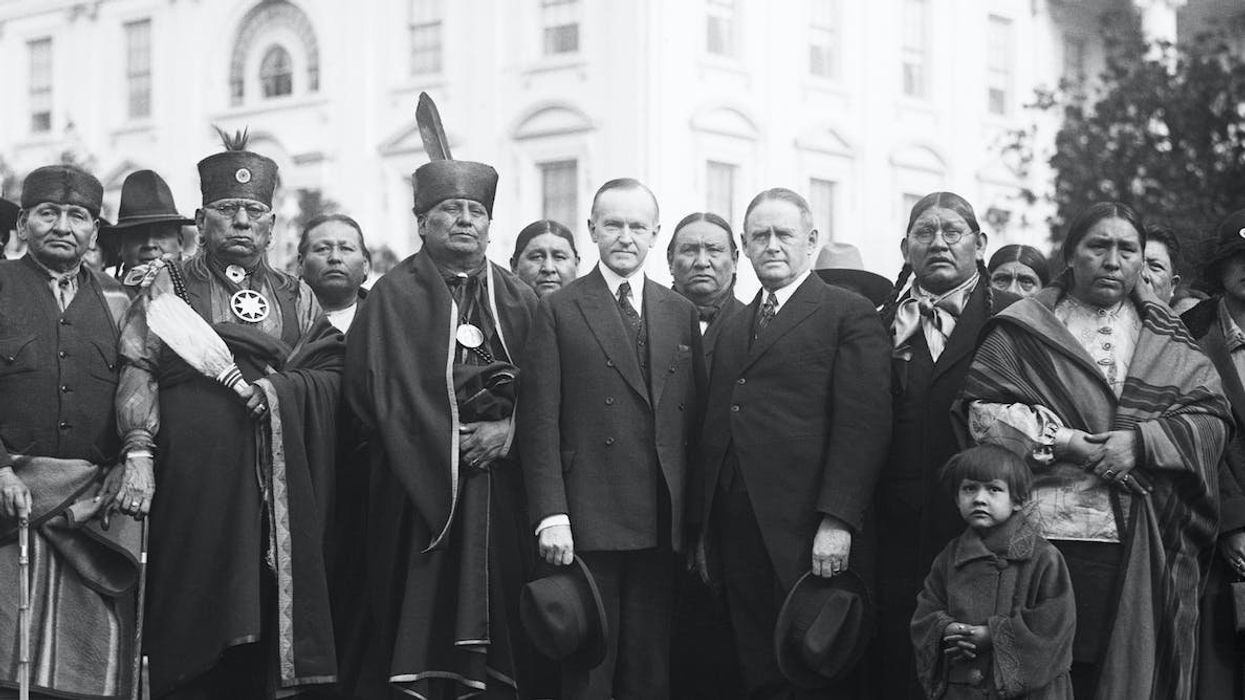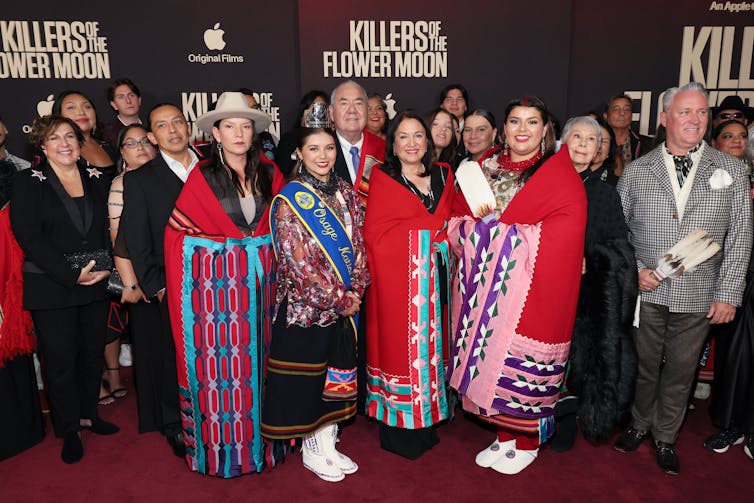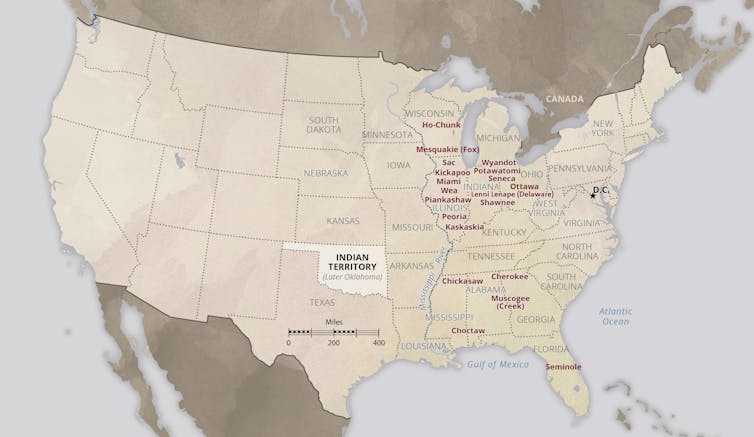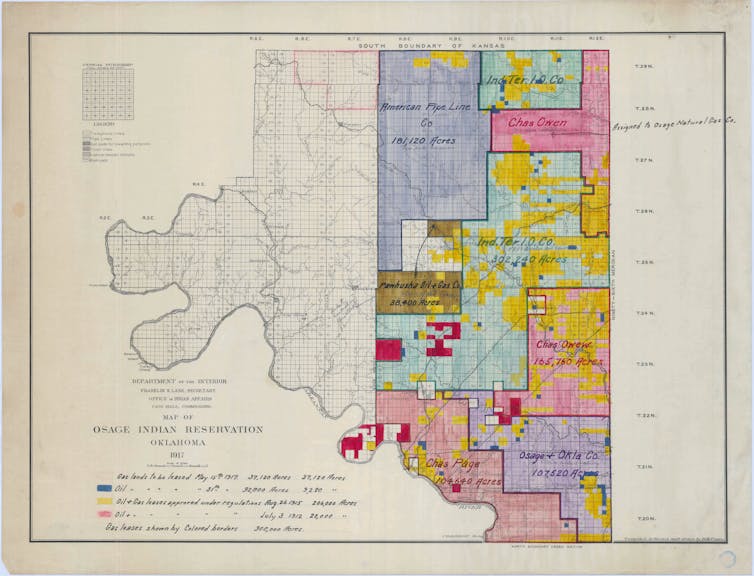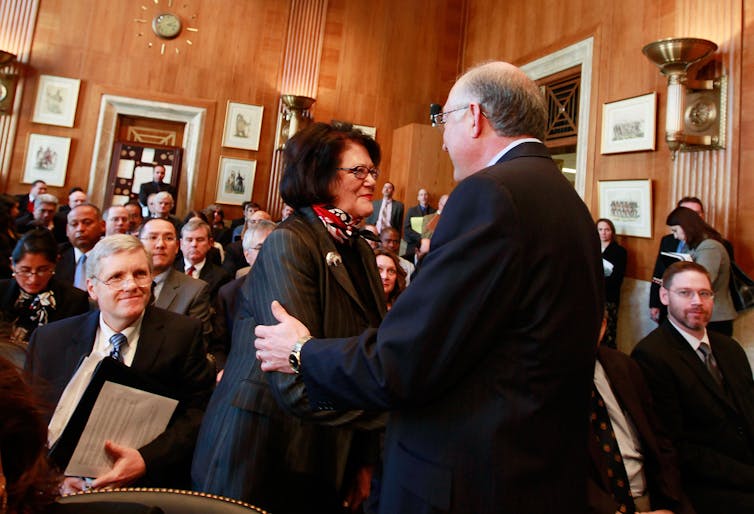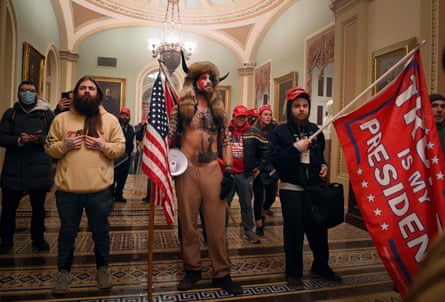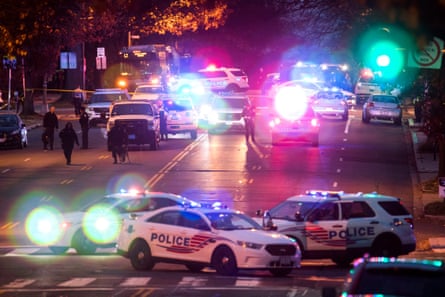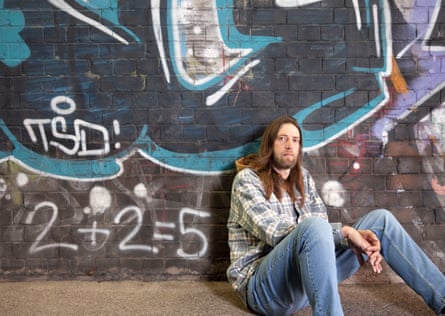
Photo by Louis Reed on Unsplash
LONG READ
Pro Publica
October 21, 2023
Ever since he was a medical student, Dr. Neil Martinson has confronted the horrors of tuberculosis, the world’s oldest and deadliest pandemic. For more than 30 years, patients have streamed into the South African clinics where he has worked — migrant workers, malnourished children and pregnant women with HIV — coughing up blood. Some were so emaciated, he could see their ribs. They’d breathed in the contagious bacteria from a cough on a crowded bus or in the homes of loved ones who didn’t know they had TB. Once infected, their best option was to spend months swallowing pills that often carried terrible side effects. Many died.
So, when Martinson joined a call in April 2018, he was anxious for the verdict about a tuberculosis vaccine he’d helped test on hundreds of people.
The results blew him away: The shot prevented over half of those infected from getting sick; it was the biggest TB vaccine breakthrough in a century. He hung up, excited, and waited for the next step, a trial that would determine whether the shot was safe and effective enough to sell.
Weeks passed. Then months.
More than five years after the call, he’s still waiting, because the company that owns the vaccine decided to prioritize far more lucrative business.
Pharmaceutical giant GSK pulled back on its global public health work and leaned into serving the world’s most-profitable market, the United States, which CEO Emma Walmsley recently called its “top priority.” As the London-based company turned away from its vaccine for TB, a disease that kills 1.6 million mostly poor people each year, it went all in on a vaccine against shingles, a viral infection that comes with a painful rash. It afflicts mostly older people who, in the U.S., are largely covered by government insurance.
Importantly, the shingles vaccine shared a key ingredient with the TB shot, a component that enhanced the effectiveness of both but was in limited supply.
From a business standpoint, GSK’s decision made sense. Shingrix would become what the company calls a “crown jewel,” raking in more than $14 billion since 2018.
But the ability of a corporation to allow a potentially lifesaving vaccine to languish lays bare the distressing reality of public health vaccine creation. With limited resources, governments have long seen no other option but to team with Big Pharma to develop vaccines for global scourges. But after the governments pump taxpayer money and resources into the efforts, the companies get control of the products, locking up ownership and prioritizing their own gain.
That’s what GSK did with the TB vaccine. Decades ago, the U.S. Army brought in GSK to work on a malaria vaccine and helped develop the ingredient that would prove game-changing for the company. It was an adjuvant, a substance that primed the body’s immune system to successfully respond to a vaccine for malaria — and, the company would come to learn, a variety of other ailments.
GSK patented the adjuvant and took control of the supply of the ingredients in it. It accepted government and nonprofit funding to develop a TB vaccine using the adjuvant. But even though it isn’t carrying the vaccine to the finish line, it isn’t letting go of it entirely either, keeping a tight grip on that valuable ingredient.
As TB continued to rage around the globe, it took nearly two years for GSK to finalize an agreement with the nonprofit Bill & Melinda Gates Medical Research Institute, or Gates MRI, to continue to develop the vaccine. While the Gates organization agreed to pay to keep up the research, GSK reserved the right to sell the shot in wealthy countries.
The trial that will determine whether the vaccine is approved won’t begin until 2024, and isn’t expected to end until at least 2028. “We just can’t operate like that for a disease that is this urgent,” said Thomas Scriba, a South African scientist and TB expert who also worked on the study.
GSK pushes back against the premise that the company delayed the development of the TB vaccine and says it remains dedicated to researching diseases that plague underserved communities. “Any suggestion that our commitment to continued investment in global health has reduced, is fundamentally untrue,” Dr. Thomas Breuer, the company’s chief global health officer, wrote in a statement.
The company told ProPublica that it cannot do everything, and it now sees its role in global health as doing early development of products and then handing off the final clinical trials and manufacturing to others. It also said that a vaccine for TB is radically different from the company’s other vaccines because it can’t be sold at scale in wealthy countries.
Though a good TB vaccine would be used by tens of millions of people, it has, in the parlance of industry, “no market,” because those who buy it are mostly nonprofits and countries that can’t afford to spend much. It’s not that a TB vaccine couldn’t be profitable. It’s that it would never be as profitable as a product like the shingles vaccine that can be sold in the U.S. or Western Europe.
Experts say the story of GSK’s TB vaccine, and its roller coaster of hope and disappointment, highlights a broken system, which has for too long prioritized the needs of corporations over those of the sick and poor.
“We don’t ask for a fair deal from our pharma partners,” said Mike Frick, a director of the tuberculosis program at Treatment Action Group and a global expert on the TB vaccine pipeline. “We let them set the terms, but we don’t ask them to pick up the check. And I just find it frankly a little humiliating.”
Steven Reed, a co-inventor of the TB vaccine, brought his idea to GSK decades ago, believing that working with a pharmaceutical giant was essential to getting the shots to people who desperately needed them. He’s disillusioned that this hasn’t happened and now says that Big Pharma is not the path to saving lives with vaccines in much of the world. “You get a big company to take it forward? Bullshit,” he said. “That model is gone. It’s failed. It’s dead. We have to create a new one.”
Gaining Control
In the early 1980s, the U.S. Army was desperate for a way to keep troops safe from the parasite that causes malaria. Military scientists had some promising ideas but wanted to find a company that could help them develop and manufacture the antigen, the piece of a vaccine that triggers an immune response. They called on SmithKline Beckman, now part of GSK, which had a plant outside of Philadelphia committed to the exact type of antigen technology they were researching.
For the company’s part, working with the Army gave it access to new science and, importantly, the ability to conduct specialized research. The Army had laboratories for animal testing and ran clinical trial sites around the world. It’s also generally easier to get experimental products through regulatory approval when working with the government, and Army scientists were willing to be infected with malaria and run the first tests of the vaccine on themselves.
Col. Carl Alving, then an investigator at the Walter Reed Army Institute of Research, said he was the first person known to be injected with an ingredient called MPL, an adjuvant added to the vaccine. Today, we know that adjuvants are key to many modern vaccines. But at the time, only one adjuvant, alum, had ever been approved for use. Alving published promising results, showing that MPL boosted the shot’s success in the body.
Company scientists took note and began adding MPL to other ingredients. If one adjuvant was good, maybe two adjuvants together, stimulating different parts of the immune system, might be even better.
It was an exciting development, bringing the multiple adjuvants together, Alving said in an interview. But then he learned that the company scientists had filed a patent for the combinations in Europe, which put limits on what he and his colleagues could do with MPL. “The Army felt perhaps a little frustrated by that because we had introduced Glaxo to the field.”
Still, the Army wanted the malaria vaccine. Military personnel started comparing the adjuvant combinations on rhesus monkeys at an Army facility in Thailand and ran clinical trials that tested the most promising pairs in humans and devised dosing strategies.
The Army found that one of the combinations came out on top: MPL and an extract from the bark of a tree that grows in Chile. The bark extract was already used in veterinary vaccines, but a scientist at one of the world’s first biotech companies had recently discovered you could purify it into a material that makes it safe enough for use in humans.
Alving said that at the time, he didn’t patent the work he and his colleagues were doing or demand an exclusive license for MPL. “It’s a question of the Army being the Army, which is not a company,” Alving said. (This was actually the second time the government failed to secure its rights over MPL. Decades earlier, the ingredient was discovered and formulated by scientists working for the Department of Veterans Affairs and a National Institutes of Health lab in Montana. One of the scientists, frustrated that his bosses in Bethesda, Maryland, wouldn’t let him test the product in humans, quit and formed a company, taking the research with him. Though his company initially said it thought MPL was in the public domain and couldn’t be patented, he did manage to patent it.)
Experts say drug development in the U.S. is littered with such missed opportunities, which allow private companies to seize control of and profit off work done by publicly funded researchers. Governments, they say, need to be more aggressive about keeping such work in the public domain. Alving has since done just that, recently receiving his 30th patent owned by the military.
It’s an open secret in the pharmaceutical world that companies participate in global health research because it’s where they get to try out new technologies that can be applied to other, more lucrative diseases.
At an investor presentation in 2016, a GSK executive used the malaria vaccine example to explain the benefit of such work. “Of those of you who think this is just philanthropy, it is not,” Luc Debruyne, then president of vaccines at GSK, told the group. He explained that it was through the malaria work that the company invented the adjuvant that is now in its blockbuster shingles vaccine. And, he explained, vaccines are high-volume products that make a steady stream of money over time. “So doing good business, innovating and doing well for the world absolutely can get married.”
As the Army’s research on the combination of MPL and the bark extract evolved — and its market potential became clear — GSK moved to vacuum up the companies that owned the building blocks to the adjuvant.
In 2005, it bought the company that owned the rights to MPL for $300 million. In 2012, it struck a deal for the rights to a lion’s share of the supply of the Chilean tree bark extract.
The company was now in full control of the adjuvant.
Picking a Winner
GSK eagerly began to test its new adjuvant on a number of diseases — hepatitis, Lyme, HIV, influenza.
Steven Reed, a microbiologist and immunologist, had come to the company in 1994 with an idea for a tuberculosis vaccine. An estimated 2 billion people are infected with TB globally, but it’s mainly those with weakened immune systems who fall ill. A century-old vaccine called BCG protects young children, but immunity wanes over time, and that vaccine does little to shield people from the most common type of infection in the lungs.
Reed had just the background and resources to attempt a breakthrough: An adjunct professor at Cornell University’s medical school, he also ran a nonprofit research organization that worked on infectious diseases and had co-founded a biotech company to create and market products.
He and his colleagues were building a library of the proteins that make up the mycobacterium that causes TB. He also had access to a blood bank in Brazil, where TB was more prevalent, that he could screen the proteins against to determine which generated an immune response that prevented people from getting sick.
At the time Reed pitched the vaccine, the company’s decision over whether to take him up was made by researchers, said Michel De Wilde, a former vice president of research and development at the company that partnered with Reed and later became part of GSK. Today, across the industry, finance units play a much stronger role in deciding what a company works on, he said.
GSK signed on, asking Reed to add the company’s promising new adjuvant to his idea for a TB vaccine.
Reed and his colleagues used more than $2 million in federal money to conduct trials from 1995 to 2005. GSK also invested, but NIH money and resources were the key, Reed said. As the vaccine progressed into testing, the Bill & Melinda Gates Foundation pitched in, as did the governments of the United Kingdom, the Netherlands and Australia, among others.
Amid all that, in 2003, GSK started testing the adjuvant in its shingles vaccine, according to annual reports, but at a much faster speed. With TB, it performed a small proof-of-concept study to justify moving to a larger one. There’s no evidence it did so with shingles. By 2010, GSK’s shingles vaccine was in final trials; in 2017, the FDA approved it for use.
To employees and industry insiders, GSK was making its priorities clear. The company built a vaccine research facility in Rockville, Maryland, to be closer to the NIH and the Food and Drug Administration; at the same time, it was retreating from TB and other global public health projects, according to former employees of the vaccine division.
All the while, the adjuvant was limited. GSK struggled to ramp up production of MPL, according to former employees there; it relies on a cumbersome manufacturing process. And it wasn’t clear whether there was sufficient supply of the Chilean tree that is essential to both vaccines.
After researchers learned of the TB vaccine’s successful proof-of-concept results in 2018, GSK said nothing about what was next.
“You would have thought people would have said: ‘Oh shit, this is doable. Let’s double down, let’s quadruple down,’” said Dr. Tom Evans, former president and CEO of Aeras, a nonprofit that led and paid for half of the proof-of-concept study. “But that didn’t happen.”
Scriba, who was involved in the study in South Africa, said he never imagined that GSK wouldn’t continue the research. “To be honest it never occurred to us that they wouldn’t. The people we worked with at GSK were the TB team. They were passionate about TB,” Scriba said. “It’s extremely frustrating.”
But Reed said that when the shingles vaccine was approved, he had a gut feeling that GSK would abandon the tuberculosis work.
“The company that dropped it used similar technology to make billions of dollars on shingles, which doesn’t kill anyone,” Reed said.
Those in the field grew so concerned about the fate of the TB vaccine that the World Health Organization convened a series of meetings in 2019.
Breuer, then chief medical officer for GSK’s vaccine division, explained that the pharmaceutical giant was willing to hand off the vaccine to an organization or company that would cover the cost of future development, licensing, manufacturing and liability. If the next trial went well, they could sell the vaccine in the “developing world,” with GSK retaining the sales rights in wealthier countries.
GSK would, however, retain control of the adjuvant, Breuer said. And the company only had enough for its other vaccines, so whoever took over the TB vaccine’s development would need to pay GSK to ramp up production, which Breuer estimated would cost around $200 million.
Dr. Julio Croda was director of communicable diseases for Brazil at the time and attended the meeting. He said he was authorized to spend significant government funds on a tuberculosis vaccine trial but needed assurances that GSK would transfer technology and intellectual property if governments paid for its development. “But in the end of the meeting, we didn’t have an agreement,” he said.
Dr. Glenda Gray, a leading HIV vaccine expert who attended the meeting on behalf of South Africa, said she wasn’t able to get a straight answer about the availability of the adjuvant.
The year after the WHO meeting, after what a Gates representative described as “a lot of negotiation,” GSK licensed the vaccine to Gates MRI, a nonprofit created by the Gates Foundation to develop drugs and vaccines for global health issues that for-profit companies won’t tackle.
GSK told ProPublica that it did not receive upfront fees or royalties as part of the arrangement, but that Gates MRI paid it a small incentive to invest in the company’s global health endeavors. GSK and Gates MRI declined to comment on the amount.
Gates MRI tax documents show a payment designated as “royalties, license fees, and similar amounts that allow the organization to use intellectual property such as patents and copyrights” the year the agreement was finalized. Among available tax documents, that is the only year the organization has made a payment in that category.
The amount: $10 million.
An Uncertain Future
In June of this year, the Gates Foundation and the Wellcome Trust announced they were pledging $550 million to fund the phase 3 trial that will finally show whether the vaccine works. They’ve selected trial locations and are currently testing it on a smaller subset of patients, those with HIV.
Jeremy Farrar, chief scientist at the WHO, said he’s more optimistic than he’s ever been in his career that we’ll have a new TB vaccine this decade.
Gates MRI and GSK declined to say who had the rights to sell the vaccine in which countries, but Gates MRI said it will “work with partners to ensure the vaccine is accessible for people living in high TB-burden lower- and middle-income countries,” and GSK acknowledged that its rights extend to South America and Eastern Europe, two regions with significant pockets of TB.
As expected, Gates MRI will be reliant on GSK to supply the adjuvant, which concerns vaccine hopefuls because of the lack of transparency surrounding its availability. One of the key ingredients, the bark extract, comes from a tree whose harvest and export has been controlled by the Chilean government since the 1970s because of overexploitation. A megadrought and forest fires continue to threaten native forests today. The main exporter of the bark says it has resolved previous bottlenecks, and GSK said it is working on a synthetic version as part of its long-term plan.
In response to questions about why it retained control of the adjuvant, GSK said it was complicated to make, would not be economical to produce in more than one place, and was a very important component in many of the company’s vaccines, so it wasn’t willing to share the know-how.
The adjuvant is only growing in value to the company, as it adds yet another lucrative vaccine to its portfolio that requires it. In May, the FDA approved a GSK vaccine for the respiratory virus known as RSV. Analysts project that the shot will bring in $4 billion annually at its peak. GSK continues to study the adjuvant in additional vaccines.
GSK strongly insists that it has enough of the adjuvant to fulfill its forecasted needs for the RSV, shingles, malaria and TB vaccines through 2035.
The company and Gates MRI said their agreement includes enough adjuvant for research and the initial supply of the TB vaccine, if it is approved. The organizations declined, however, to specify how many people could be vaccinated. GSK also said it was willing to supply more adjuvant after that, but further negotiations would be necessary and Gates MRI would likely need to pay to increase adjuvant manufacturing capacity. For its part, Gates MRI said it is evaluating several strategies to ensure longer term supply.
Several experts said that Gates MRI should test other adjuvants with the vaccine’s antigen. That includes Farrar, who said it would be “very wise” to start looking for a new adjuvant. He is one of the few people who has seen the agreement between Gates MRI and GSK as a result of his previous role as director of the Wellcome Trust. Farrar is now helping to lead a new TB Vaccine Accelerator Council at the WHO and said he believes one of the group’s roles would be to find solutions to any future problems with the adjuvant.
Gates MRI declined to answer when asked if it was considering testing other adjuvants with the vaccine’s antigen. GSK, along with several other scientists and regulators that ProPublica spoke with, expressed that using a new adjuvant would require redoing all of the long and expensive clinical trials.
U.S. government officials, meanwhile, are working to identify adjuvants that aren’t already tied up by major pharmaceutical companies.
For a corporation, the primary concern is “what is this adjuvant doing for my bottom line,” said Wolfgang Leitner, who began his career working at Walter Reed Army Institute of Research on the malaria vaccine as a consultant for GSK. Now the chief of the innate immunity section at the National Institute of Allergy and Infectious Diseases, his job is to encourage the development of new adjuvants and to make sure that researchers have access to ones that aren’t tightly controlled by individual companies.
The WHO has also been helping to build a global network of vaccine manufacturers who can develop and supply vaccines to less wealthy countries outside of the shadow of Big Pharma; it is using a technology debuted during the COVID-19 pandemic called mRNA, which deploys snippets of genetic code to trigger an immune response. Reed, an inventor of GSK’s TB vaccine, co-founded the company at the center of that effort, Afrigen, after growing concerned about the fate of the vaccine he made for GSK.
Reed helped create a second TB vaccine, which Afrigen has the rights to manufacture for sale in Africa. But that vaccine has yet to start a proof-of-concept trial.
Over the past five years, an average of just $120 million a year has been spent on all TB vaccine research globally, including money from governments, pharmaceutical companies and philanthropic organizations, according to annual surveys conducted by the Treatment Action Group. For perspective, the U.S. alone spent more than $2 billion developing COVID-19 vaccines from 2020 to 2022. At a special UN meeting on tuberculosis in 2018, the nations of the world pledged to ensure $3 billion was spent on TB vaccine research and development over the next five years. Just 20% of that was handed out.
While that mRNA hub holds promise, it will be years before an mRNA TB vaccine enters a proof-of-concept trial, according to people involved. The pharmaceutical companies that made successful COVID-19 vaccines have refused to share the technology and manufacturing techniques that make mRNA vaccines work. One company, Moderna, has said it won’t enforce its patents on mRNA vaccines Afrigen creates for COVID-19, but it’s not clear what it’ll do if Afrigen applies those techniques to a disease like TB. (Paul Sagan, board chairman of ProPublica, is a member of Moderna’s board.)
To date, the GSK tuberculosis vaccine — which does not use mRNA technology — is the only one that meets a set of characteristics the WHO believes are necessary for a viable TB vaccine.
The phase 3 trial is set to begin early next year. In the time between the two trials, approximately 9 million people will have died from TB.






